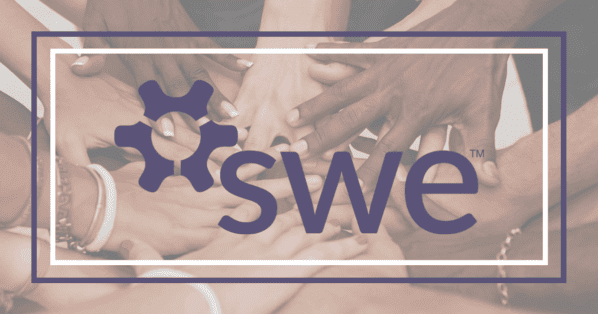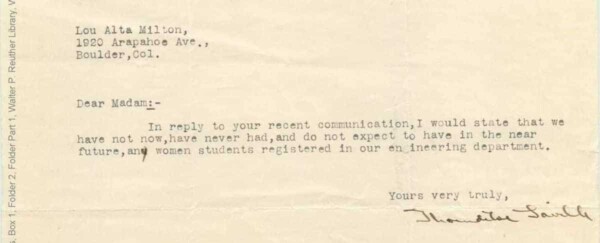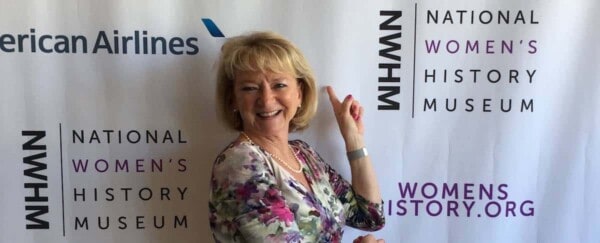This article about women engineers by Georgene Huang is from Forbes.com.
I hear from employers all the time that they are looking to hire more women in engineering and STEM. At the same time, I also hear all the time about the dearth of women engineers and the paucity of female engineering students and graduates, as well as the mid-career issue of the “leaky pipeline” of women who do not ultimately remain in the engineering profession. Read more about these issues in SWE’s annual Literature Review.
To be sure, there is a complex set of issues at work here, something that female engineers’ job reviews within the Fairygodboss community make abundantly clear. But to get a clearer picture of the whole landscape for women in engineering over a longer period of time, I turned to Karen Horting, CEO and executive director of one of the oldest and most respected professional organizations of women engineers in the United States, the Society of Women Engineers (SWE).
“I don’t know of any career with a bachelor’s degree where you can earn six figures, work around the world, and can make such a big impact.” – Karen Horting, SWE CEO & Executive Director
Horting came to SWE 13 years ago after having spent decades in the private and scientific sectors where, as a life-scientist, she saw firsthand how certain issues like the glass ceiling and sponsorship deficiencies can negatively impact a woman’s career. During her tenure at SWE, she’s seen the landscape for female engineers evolve. And the good news is that she’s mostly sanguine about the changes she’s observed.
SWE’s stated mission is to “stimulate women to achieve full potential in careers as engineers and leaders, expand the image of the engineering profession as a positive force in improving the quality of life, and demonstrate the value of diversity.” To that end, the organization has a membership base of nearly 30,000 women who are split roughly evenly between a college student population and professionals who work in engineering and technical fields.
To support their members in their careers, SWE provides resources such as peer-to-peer networking, educational events, and career information. Over time, however, SWE has moved from an emphasis on supporting an engineer’s early career to increasingly becoming focused on the mid-level or senior-level professional. As Horting explained, the issue has become: “How do we keep mid-level women [in engineering] ‘in’ and how do we give them the tools to get them into senior leadership, CEO, and directorship roles?”
Of course, focusing on what an individual can do to advance her career is only one side of the equation. Employers, too, play a large role in how likely it is that a woman engineer is able to successfully maintain and develop her career over time. In this area, Horting has seen some positive changes. For example, she says that while things may not be changing as much as people would like, she finds that senior leaders at companies are increasingly open to really listening and wanting to understand what works.
Horting says what’s different now is that “organizations are willing to share their data and admit there’s a problem” whereas before, the reaction was more “it’s a meritocracy,” or “we have a policy” and “everything is fine.” Moreover, she notes that she doesn’t really have to have many conversations anymore about the business case for diversity. She told me she believes that most leaders understand that there’s a war for talent, and “doing diversity and inclusion well is a competitive advantage for any innovative company that wants to create good products and have good results.”
Horting says that she’s seen a shift in organizations taking a more data-driven approach, trying to measure what is happening within their own organizations but also trying to pair that with external data and research about promising or “best” practices so that they can compare and contrast what they do to hire and retain women engineers.
If there’s one thing that Horting wishes more people — especially young girls and women knew — it’s that engineering is, as she puts it, “a very desirable career for women.” She says that if you’re a young woman interested in science and math, “I don’t know of any career with a bachelor’s degree where you can earn six figures, work around the world, and can make such a big impact.”
In sum, while it’s clear there’s still a lot of work left to be done to encourage engineering education and showcase the promising jobs and careers female engineers can have, Horting’s perspective at the helm of SWE is that there’s also been a lot of progress on the part of both employers and engineers to advance more women to the highest levels of the engineering profession — where they most certainly belong.
Georgene Huang is CEO of Fairygodboss, a marketplace where professional women looking for jobs, career advice and the inside scoop on companies meet employers who care about gender equality.
Author
-
![Support for Women Engineers From Employers Is Key [] SWE Blog](https://alltogether.swe.org/wp-content/uploads/2021/10/swe-favicon.png)
SWE Blog provides up-to-date information and news about the Society and how our members are making a difference every day. You’ll find stories about SWE members, engineering, technology, and other STEM-related topics.






